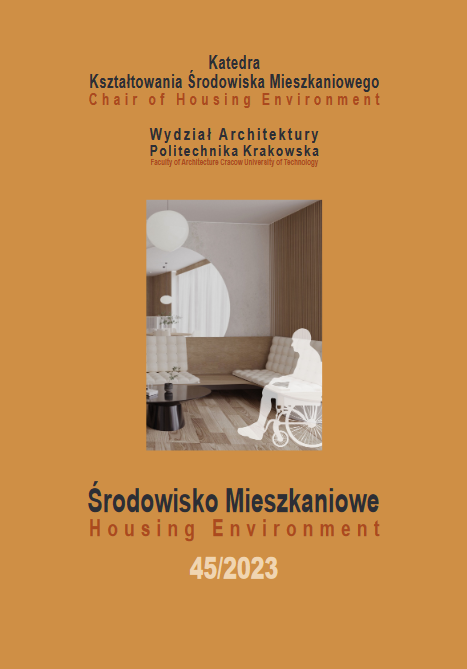Accessibility to public services and green
areas in Warsaw housing estates in the
context of the Covid-19 pandemic and the
10-minute neighbourhood concept
Accessibility to public services and green
areas in Warsaw housing estates in the
context of the Covid-19 pandemic and the
10-minute neighbourhood concept
Author(s): WOJCIECH BARTOSZCZUK, AGNIESZKA CIEŚLA, KATARZYNA RĘDZIŃSKASubject(s): Architecture, Health and medicine and law, Rural and urban sociology, Welfare services
Published by: Wydawnictwo Uniwersytetu Jagiellońskiego
Keywords: Covid-19; lockdown; 15-minute city; X-minute neighbourhood; chrono-urbanism; internal and external green spaces; primary services; public services; social services; retail services; green services;
Summary/Abstract: During the lockdown period, the quality of the residential environment determined by accessibility of primary public services andgreen spaces became very important. In the global discussion, the concepts of chrono-urbanism, which define the optimal distanceto different services per unit of time, have become widely discussed.This paper aims to assess the quality of the residential environment of selected Warsaw housing estates regarding accessibility toprimary public services and green spaces in the context of the Covid-19 pandemic and the 10-minute neighbourhood concept. Thestudy analysed 21 Warsaw housing estates in terms of accessibility to public services, commerce and green space within a 10-, 20-and 30-minute buffer. The results indicate that housing estates built before 1989 have better accessibility to selected services thannewer ones. The most differentiating criterion for housing estates was the provision of internal greenery. In contrast, accessibility tofacilities and green areas was, apart from the two housing estates, good or very good. This conclusion demonstrates the importanceof conducting analyses on the provision of internal greenery in housing estates.The high rates of Biologically Active Areas (BAA) in the newly adopted local development plans may indicate positive change,although we cannot yet speak of a trend. However, they may suggest a growing awareness of the role of green spaces in maintainingthe health and well-being of residents, and the lessons learned from the pandemic will further reinforce this process.
Journal: Środowisko mieszkaniowe
- Issue Year: 2023
- Issue No: 45
- Page Range: 19-32
- Page Count: 14
- Language: English

